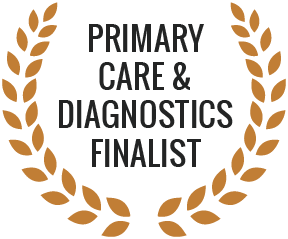Blisters can have a wide range of causes. If the blister is not cause by a trauma, allergic reaction or underlying condition, the most common cause is friction. Friction blisters occur when something repeatedly rubs on the same area of skin, such as a new pair of shoes, strap of a bag, or bike handlebars, for example. The friction causes the outer layers of the skin to separate, & fluid to fill in between.
If your blister is large, painful, appears for no obvious reason, or is accompanied by any other symptoms, please make an appointment to see one of our specialist dermatologists, who can diagnose you & recommend a safe & effective method of treatment.
Definition
Blisters are a reaction to irritation or infection of the skin, they form to protect damaged skin & encourage it to heal. Also called a vesicle, a blister is a raised area of skin that is filled with clear or dark fluid. They have different causes, including burns, friction, & allergies, & can be painful, especially blood blisters, which form when there is damage to a blood vessel.
Symptoms
The main symptom of a blister is a small, raised pouch or pocket of fluid under the skin. The fluid may be clear, red or black if it is a blood blister, or filled with yellow green pus if it is infected. In all cases of blisters, it is recommended that you see a doctor for diagnosis & treatment, but an infected blister is a medical emergency & must be treated immediately, as it can lead to an infection of the blood.
Some warning symptoms for blisters are:
- Pain
- Recurring blister (a blister that keeps coming back or does not heal)
- Infection (pus-filled, & red or swollen skin around the blister)
- Blisters appearing on the eyelids, mouth, or genitals
The conditions that can cause a blister include:
- Burns – depending on depth & severity, symptoms will vary. First-degree burns will show some swelling, & red skin that turns white with pressure; second-degree burns are very painful, with weeping
- Blisters; third-degree burns, which are the most serious, are darker brown or tan colours & have no sensitivity to touch.
- Cold sores – the first sign of a cold sore is a small blister or cluster of blisters appearing on the lips or around the mouth, they may tingle or be painful, & you may also have a fever, swollen lymph nodes, or body aches; caused by the herpes virus HSV-1 (also called stomatitis).
- Genital herpes – caused by a variant of the cold sore herpes virus, HSV-2 causes painful blisters on & around the genitals which weep fluid & crust over or bleed, & may be accompanied by flu-like symptoms.
- Impetigo – a rash of fluid-filled blisters that weep & break, forming a yellow or golden crust, often around the mouth, chin, or scalp.
- Contact dermatitis (allergic eczema) – itchy, red skin with blisters that ooze & crust.
Some other conditions whose symptoms include skin blisters are shingles, pemphigoid, bullous impetigo, pompholyx dermatitis (pompholyx eczema), erysipelas, frostbite, & scabies.






















